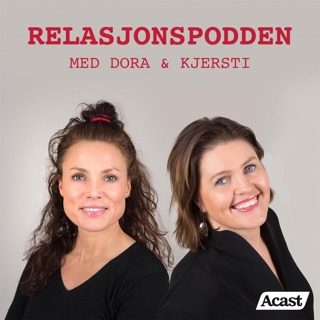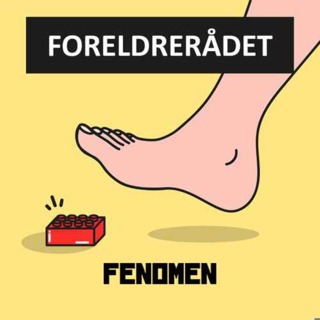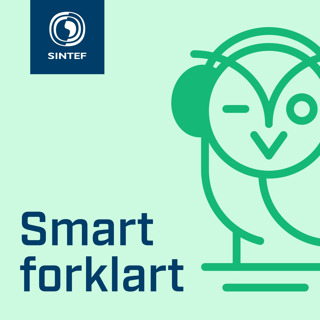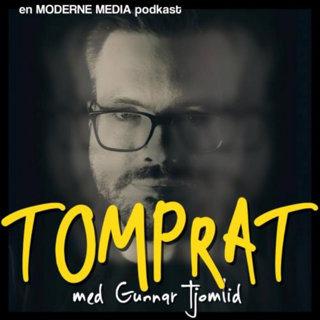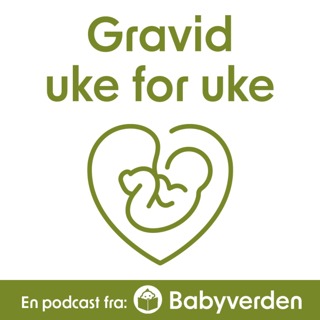
Episode 15 Preview
Subscribe on iTunes Subscribe on Google Play Subscribe on Stitcher We're all about using technology to improve teaching. But is there really anything out there worth using? We'll be chatting with Dr. Nick Vanselow, creator of CEU Helper, about how he used computerized behavioral skills training to tackle the very important issues of teaching children abduction prevention and fire safety skills. But first, we share technologies that we love to use to start off a new school year. And, if you aren't watching our YouTube channel, you missed a fabulous singing intro. Articles for next week: Vanselow, N.R. & Hanley, G.P. (2014). An evaluation of computerized behavioral skills training to teach safety skills to young children. Journal of Applied Behavior Analysis, 47, 51-69. doi: 10.1002/jaba.105
7 Sep 201627min

Episode 14 - Transitioning to Adulthood, part 2
Subscribe on iTunes Subscribe on Google Play Subscribe on Stitcher It's the second part of our shows on transitioning to adulthood and the challenges therein. This week we return to our typical format and discuss two articles related to needed vocational skills: asking for assistance with a vocational task and using an iPhone cueing system to perform as a fire safety mascot. Yes, you read that right: a fire safety mascot. If research about inflatable suits with an iPhone Velcroed inside was on your wish list, consider this show your friendly genie. And if you think the gifts stop there, you're in for a treat when Jackie shares her favorite Starbucks drink and Diana tells us what TV show she enjoys while falling asleep on the couch. Is anything more representative of adulthood than overpriced coffee and bad TV? P.S. from Rob: Please don't tell me how The Wire ends. Not cool, dude. Articles discussed this episode: Burke, R.V., Andersen, M.N., Bowen, S.L., Howard, M.R., & Allen, K.D. (2010). Evaluation of two instruction methods to increase employment options for young adults with autism spectrum disorders. Research in Developmental Disabilities, 31, 1223-1233. doi: 10.1016/j.ridd.2010.07.023 Dotto-Fojut, K.M., Reeve, K.F., Townsend, D.B., & Progar, P.R. (2011). Teaching adolescents with autism to describe a problem and request assistance during simulated vocational tasks. Research in Autism Spectrum Disorders, 5, 826-833. doi: 10.1016/j.rasd.2010.09.012 If you're interested in ordering CEs for listening to this episode, click here to go to the store page. You'll need to enter your name, BCBA #, and the two episode secret code words to complete the purchase. Email us at abainsidetrack@gmail.com for further assistance.
31 Aug 20161h 14min

Episode 13 - Transitioning to Adulthood, part 1
Subscribe on iTunes Subscribe on Google Play Subscribe on Stitcher We were so astonished at the paucity of research related to teaching adolescents and adults with autism that we decided to put together two full episodes to raise awareness about the topic. Our first episode summarizes many of the overall challenges that society and adults with autism will face in the coming years. Start by listening to Jackie, Rob, and Diana grapple with the big issues by making fun of educational videos and smiling politely at another Rob Rant about the government. End by listening to a fascinating interview with Dr. Peter Gerhardt in which he discusses the life skills nobody is talking about (or training on!), which target academics have already become obsolete, the goal every behavior analyst should strive to achieve, and what social interaction will replace the high five in America. Articles discussed this episode: Gerhardt, P.F. & Lainer, I. (2011). Addressing the needs of adolescents and adults with autism: A crisis on the horizon. Journal of Contemporary Psychoherapy, 41, 37-45. doi: 10.1007/s10879-010-9160-2 If you're interested in ordering CEs for listening to this episode, click here to go to the store page. You'll need to enter your name, BCBA #, and the two episode secret code words to complete the purchase. Email us at abainsidetrack@gmail.com for further assistance.
24 Aug 20161h 7min

Episode 13 and 14 DOUBLE-ALBUM Preview
Subscribe on iTunes Subscribe on Google Play Subscribe on Stitcher In this double-album edition of our preview episodes, we're talking about research on transitioning to adulthood for individuals with autism. In addition to our typical review of research related to the subject, we've got an interview with Dr. Peter Gerhardt, a leader in spreading awareness of the crisis that is special education services for adults. On the lighter side of things: the results of our filler speech challenge! Only one can win, though everyone gets candy. Also, errata featuring a fun link from a listener about standard celeration charts. Listen to the full episodes over the next two weeks (yes, back-to-back episodes) for maximum information and discussion. Articles for next week: Gerhardt, P.F. & Lainer, I. (2011). Addressing the needs of adolescents and adults with autism: A crisis on the horizon. Journal of Contemporary Psychoherapy, 41, 37-45. doi 10.1007/s10879-010-9160-2 And, while not a research article, a parent's perspective on the transition process: "Luke's best chance: One man's fight for his autistic son" from Rolling Stone magazine Articles for the week after that: Burke, R.V., Andersen, M.N., Bowen, S.L., Howard, M.R., & Allen, K.D. (2010). Evaluation of two instruction methods to increase employment options for young adults with autism spectrum disorders. Research in Developmental Disabilities, 31, 1223-1233. doi: 10.1016/j.ridd.2010.07.023 Dotto-Fojut, K.M., Reeve, K.F., Townsend, D.B., & Progar, P.R. (2011). Teaching adolescents with autism to describe a problem and request assistance during simulated vocational tasks. Research in Autism Spectrum Disorders, 5, 826-833. doi: 10.1016/j.rasd.2010.09.012
17 Aug 201620min

Episode 12 - Research Grab Bag
Subscribe on iTunes Subscribe on Google Play Subscribe on Stitcher This week we take out three articles from our research grab bag, three articles related only by our enjoyment of the subject matter. Diana teaches us all the merits of good yoga poses, Rob chides everyone for all of their filler responses, and Jackie uses bark collars to keep the hosts behaving. Plus, Rob breaks our brand new mixer and we all reiterate Skinner's proposition that applied behavior analysis is the cat's pajamas. That "cat's pajamas" part might be a paraphrase. Articles discussed this episode: Protopopova, A., Kisten, D., & Wynne, C. (2016). Evaluating a humane alternative to the bark collar: Automated differential reinforcement of not barking in a home-alone setting. Journal of Applied Behavior Analysis, 49, 1-10. doi:10.1002/jaba.334 Mancuso, C. & Miltenberger, R.G. (2016). Using habit reversal to decrease filled pauses in public speaking. Journal of Applied Behavior Analysis, 49, 188-192. doi: 10.1002/jaba.267 Gruber, D.J. & Poulson, C.L. (2016). Graduated guidance delivered by parents to teach yoga to children with developmental delays. Journal of Applied Behavior Analysis, 49, 193-198. doi: 10.1002/jaba.260 If you're interested in ordering CEs for listening to this episode, click here to go to the store page. You'll need to enter your name, BCBA #, and the two episode secret code words to complete the purchase. Email us at abainsidetrack@gmail.com for further assistance.
10 Aug 20161h 18min

Episode 12 Preview
Subscribe on iTunes Subscribe on Google Play Subscribe on Stitcher It's research grab bag time! Next week, we're discussing three articles only linked by our interest in the subject matter. But first, Rob reads some listener mail while Jackie and Diana prepare to give a speech. How many times will they say "um" or "like"? Email us with the answer for a chance at a CE credit. Articles for next week: Protopopova, A., Kisten, D., & Wynne, C. (2016). Evaluating a humane alternative to the bark collar: Automated differential reinforcement of not barking in a home-alone setting. Journal of Applied Behavior Analysis, 49, 1-10. doi:10.1002/jaba.334 Mancuso, C. & Miltenberger, R.G. (2016). Using habit reversal to decrease filled pauses in public speaking. Journal of Applied Behavior Analysis, 49, 188-192. doi: 10.1002/jaba.267 Gruber, D.J. & Poulson, C.L. (2016). Graduated guidance delivered by parents to teach yoga to children with developmental delays. Journal of Applied Behavior Analysis, 49, 193-198. doi: 10.1002/jaba.260
3 Aug 201622min

Episode 11 - Preventing Errors in Discrete Trial Training
Subscribe on iTunes Subscribe on Google Play Subscribe on Stitcher Rather than pull your hair out about that discrete trial program that JUST...ISN'T...WORKING, why not listen to us discuss some possible solutions. We review research on minimizing overselectivity using a differential observing response and on using more salient behavior-consequence relations all in the name of helping you avoid those pesky DTT error patterns. Plus, we share the secrets of remembering the 140 Crayola crayon colors, literal reinforcer stacking, and Rob's Boston accent. Articles discussed this episode: Dube, W.V, & McIlvane, W.J. (1999). Reduction of stimulus overselectivity with nonverbal differential observing responses. Journal of Applied Behavior Analysis, 32, 25-33. doi: 10.1901/jaba.1999.32-25 Fisher, W.W., Pawich, T.L., Dickes, N., Paden, A.R., & Toussaint, K. (2014). Increasing the saliency of behavior-consequence relations for children with autism who exhibit persistent errors. Journal of Applied Behavior Analysis, 47, 738-748. doi: 10.1002/jaba.172 If you're interested in ordering CEs for listening to this episode, click here to go to the store page. You'll need to enter your name, BCBA #, and the two episode secret code words to complete the purchase. Email us at abainsidetrack@gmail.com for further assistance.
27 Jul 20161h 10min

Episode 11 Preview
Subscribe on iTunes Subscribe on Google Play Subscribe on Stitcher In preparing to talk about avoiding errors during discrete trial training, we take some time to celebrate milestones, thank our listeners, and discuss some interesting feedback. And, to stay hip with the kids, we try our hand at a YouTube stream. Articles for next week: Dube, W.V, & McIlvane, W.J. (1999). Reduction of stimulus overselectivity with nonverbal differential observing responses. Journal of Applied Behavior Analysis, 32, 25-33. doi: 10.1901/jaba.1999.32-25 Fisher, W.W., Pawich, T.L., Dickes, N., Paden, A.R., & Toussaint, K. (2014). Increasing the saliency of behavior-consequence relations for children with autism who exhibit persistent errors. Journal of Applied Behavior Analysis, 47, 738-748. doi: 10.1002/jaba.172
20 Jul 201614min





